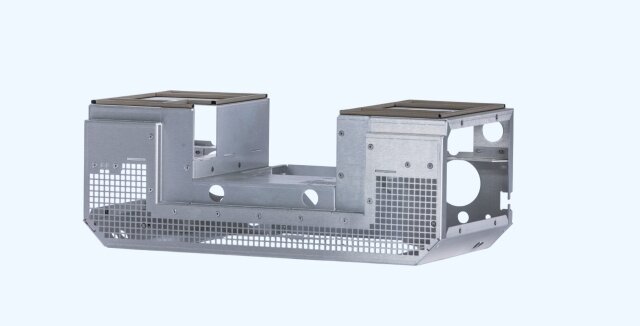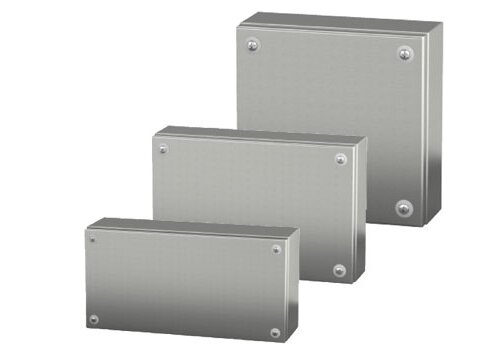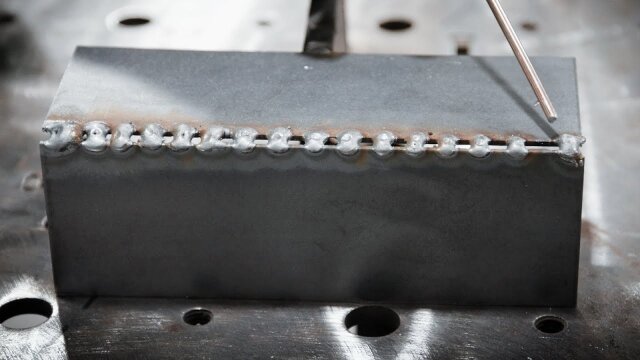金属部品は錆び始めると性能が低下する。多くの工場は、プライマーやコーティング剤を使ってこれを遅らせようとする。しかし、これらの方法のすべてがうまく機能するわけでも、長持ちするわけでもありません。黒リン酸塩コーティングは、金属を表面から保護することで、より良い解決策を提供します。強靭な層を形成し、強度を高め、摩耗を減らします。
黒リン酸塩にはいくつかの利点がある。このプロセスは迅速かつ簡単に適用でき、多くの種類のスチール部品に対応します。次に、黒リン酸塩皮膜の仕組み、主な特徴、最も一般的に使用される場所について説明します。
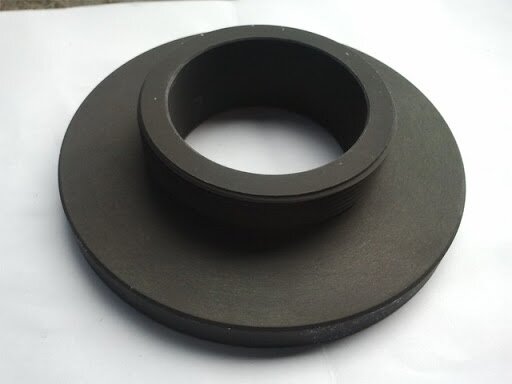
黒リン酸塩コーティングとは?
黒リン酸塩皮膜は化学変化プロセスである。黒リン酸塩皮膜は、濃い灰色または黒色のリン酸塩の結晶層を鋼鉄に薄くコーティングするものです。これは、リン酸とその他の化学物質を加えた高温の混合液に部品を浸すことで起こります。コーティングは金属に付着し、わずかにざらざらした感触の保護表面を作ります。
このコーティングは摩擦を減らし、軽い防錆を提供し、オイルやペイントが表面に留まるのを良くします。これだけで完全に錆を止めることはできませんが、他の保護仕上げの下地層として効果的です。
コーティングは薄く、通常0.0001~0.0003インチの厚さです。パーツの大きさにはあまり影響しないので、タイトフィットや正確な寸法が必要なパーツに最適です。
リン酸塩コーティングの科学
リン酸塩コーティングは、鋼鉄と特殊なリン酸塩溶液との間の制御された化学反応によって機能します。この反応により、金属表面に結合する結晶層が形成されます。その結果、部品の性能を向上させる強力な保護仕上げが実現します。
黒リン酸塩の化学組成
黒リン酸塩皮膜は、そのほとんどがリン酸鉄(FePO₄)から作られている。マンガンや亜鉛などの追加元素を含むことも多い。コーティング液にはリン酸、水、金属塩が含まれる。鉄鋼部品がこの加熱された混合液に浸されると、酸が表面と反応します。
この反応は金属を軽く溶かす。同時にリン酸塩の結晶が形成され、表面に付着する。この濃い灰色や黒の結晶は、均一で少しざらざらした質感を持っている。このテクスチャーは、油や塗料の付着を良くします。
コーティングは単に部品の上に乗っているのではなく、表面と融合しているのです。この結合により、コーティング層は強度を増し、応力や摩擦に耐えることができます。
コーティングにおけるマンガンと亜鉛の役割
マンガンと亜鉛はリン酸塩皮膜の一般的な添加剤です。それぞれ、部品のニーズに応じて異なる利点をもたらします。
リン酸マンガン(MnPO₄)は、より厚く強靭な皮膜を形成します。ギアやブッシュのような可動部品に最適です。結晶が大きいと、より多くのオイルを保持することができ、潤滑を助け、摩耗を減らします。
リン酸亜鉛(Zn₃(PO₄₂)は、より滑らかできめ細かい層を形成します。錆びを防ぎ、塗装の密着性を高める効果がある。多くの自動車部品は塗装前にリン酸亜鉛でコーティングされている。
黒リン酸塩には通常亜鉛が多く含まれているため、一般的な使用、特に激しい摩耗ではなく防錆と外観に重点を置く場合に適しています。マンガンと亜鉛のどちらを選ぶかは、その部品が実際の世界でどのように使用されるかによります。
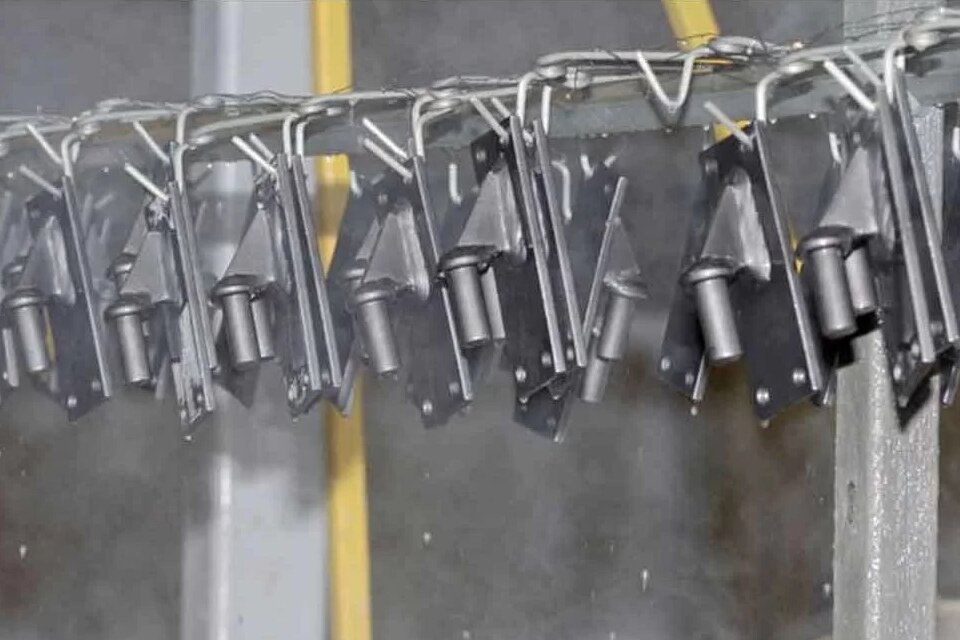
黒リン酸塩コーティングの仕組みは?
黒リン酸塩コーティングには、いくつかの簡単な工程があります。そのひとつひとつが、最終的な表面の見た目や耐久性、実際の使用における性能に影響します。
表面処理
最初のステップは、金属部分のクリーニングである。油脂、汚れ、錆をすべて取り除かなければならない。表面がきれいでないと、コーティングがうまく定着せず、長持ちしない可能性がある。
ほとんどの部品は、切削や取り扱いによる油分を除去するためにアルカリ脱脂を受ける。錆や古いコーティングがある場合は、それを剥がすために酸洗いが行われることもある。洗浄後、部品は水で洗い流され、残った化学物質が取り除かれる。
リン酸塩浴の化学的性質と条件
次に、部品を加熱したリン酸塩浴に入れる。この浴にはリン酸、亜鉛塩、マンガン塩、その他の添加剤が含まれている。温度は通常160°Fから200°Fの間に保たれる。
部品が溶液に触れるとすぐに反応が始まる。金属表面がわずかに溶解し、リン酸塩の結晶が形成され結合し始める。
浴槽に入れる時間は、必要なコーティングによって異なる。たいていの部品は5分から15分ほど溶液に浸しておくが、より長い時間浸すとコーティングが厚くなる。
すすぎ、中和、乾燥
リン酸塩処理が終わったら、部品をきれいな水ですすぐ。これにより反応が止まり、緩みや余分な物質が取り除かれます。工程によっては、残った酸を除去し、シミや粉の蓄積を避けるため、中和すすぎを行います。
すすいだ後、部品を乾燥させる。乾燥は、送風機、加熱、またはその両方で行うことができる。次の工程に進む前や保管する前に、部品が完全に乾いている必要がある。
オプションの後処理
黒リン酸塩コーティングはわずかに多孔質で、湿気や空気を通します。保護効果を高めるために最終処理が施されることが多い。
この後処理には通常、オイル、ワックス、シーラントが含まれる。これらは表面の小さな穴を埋め、水や空気が金属に到達するのをブロックする。オイルが最も一般的である。滑らかな仕上がりになり、摩擦を減らし、パーツに深い黒色を与えます。
この最終工程では、乾燥後にディッピングやスプレーを行う。厚みはほとんど増えないが、コーティングを長持ちさせ、作業性を向上させる。
黒リン酸塩皮膜の主な特徴
黒リン酸塩皮膜は、鉄鋼部品に外観と機能のユニークな組み合わせを与えます。以下は、黒リン酸塩皮膜が多くの産業で高い評価を得ている理由です。
表面の外観と質感
コーティングはダークグレーからブラック。マットで反射のない仕上がりになります。これは、工具や銃器部品のような映り込みが少ない部品が好まれる場合に最適です。
リン酸塩の結晶のため、テクスチャーはわずかにざらざらしている。これは表面がオイルや塗料を保持するのに役立つ。この工程が正しく行われると、仕上がりは均一できれいになる。
耐食性特性
黒リン酸塩はそれ自体で軽い防錆効果を発揮します。錆の進行を遅らせるが、完全に止めることはできない。コーティングは、水分や空気がむき出しの鋼鉄に到達するのを防ぎます。
オイルやワックスと組み合わせることで、抵抗力が大幅に向上する。表層は気孔を埋め、湿気を遮断するので、屋内での使用や使用前に保管する部品に適している。
塗料密着性の向上
リン酸塩処理によって残されたざらざらした多孔質の表面は、塗料の付着をよくします。塗料が上に乗るのではなく、表面に食い込むのです。これにより、時間の経過による剥離や剥がれを防ぐことができる。
黒リン酸塩が塗装前の下塗りとしてよく使われるのはこのためです。見た目も塗装部分の寿命も向上する。
潤滑性と耐摩耗性
黒リン酸塩は、摺動部品間の摩擦を低減します。コーティングは油分をよく保持するため、使用中に部品がスムーズに動く。
そのため、次のような用途に役立つ。 ファスナーギアや軽い磨耗に直面する部品。ハード・コーティングの代わりにはなりません。 メッキ しかし、低コストで軽量なプロテクションが必要な場合には効果的である。
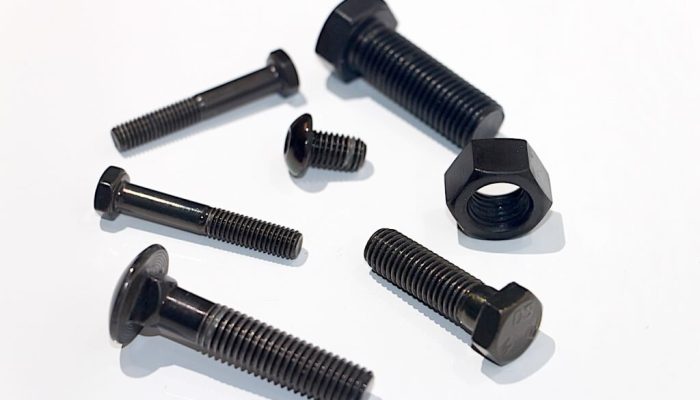
黒リン酸塩コーティングに適した素材
黒リン酸塩皮膜は、鉄系金属(鉄を主成分とする材料)に最適です。ここでは、材料の適合性について知っておく必要があることを説明します:
低・中炭素鋼
黒リン酸塩は、リン酸塩溶液と反応する適切な 表面化学的性質を持つ低炭素鋼や中炭素鋼に最も 適している。
このコーティングは、炭素鋼ファスナーによく使用される、 括弧およびブッシングに使用される。層が均一に形成され、密着性が高く、潤滑性と耐食性を向上させる。
鋳鉄と合金鋼
鋳鉄にもリン酸塩処理を施すことができる。皮膜は炭素鋼ほど滑らかではありませんが、それでも保護層を形成します。鋳鉄の多孔質な表面は、コーティング後に油を保持するのに役立ち、耐錆性を高めます。
合金鋼の中にもよく反応するものがあるが、それは合金の含有量による。クロムやニッケルを多く含む鋼は反応が弱く、コーティングが不均一になることがある。
不向きな金属と失敗の理由
黒リン酸塩コーティングはアルミニウム、ステンレス鋼、銅、真鍮には効果がありません。これらの金属は、リン酸塩の結晶が形成されるのに必要な表面化学的性質を持っていません。
ステンレス鋼には、反応を阻止する不動態クロム層がある。銅や真鍮は鉄と同じように酸と反応しない。
これらの金属をリン酸塩浴に入れると、変色したり、穴があいたり、コーティングされずに残ることがある。 その他の表面処理のようなものだ。 陽極酸化処理, 不活性化またはメッキの方が良い。
黒リン酸と黒酸化物の比較
黒リン酸塩と黒酸化物は鋼鉄の表面を黒くし、性能を向上させる。しかし、これらは異なる工程を経て作られ、目的も微妙に異なる。
黒リン酸塩は化成皮膜である。鉄の表面にリン酸塩の結晶の層を形成する。この皮膜はわずかに多孔質で、油をよく保持する。摩擦を減らし、腐食を遅らせ、塗装の密着性を高めます。厚みは0.0001~0.0003インチです。
ブラックオキサイド も化学処理だが、これは鋼鉄の最上層をマグネタイト(Fe₃O₄)に変える。この層はかなり薄く、約0.00002インチです。黒酸化物は、より黒く光沢のある仕上がりになる。工具や銃の部品、公差が厳しい精密部品によく使用される。
主な違い
- 厚さ:リン酸塩は厚い。黒酸化物は非常に薄い。
- 表面の感触:リン酸塩はマットで少しざらざらした質感。黒酸化物は滑らかで光沢がある。
- ウェア:リン酸塩は潤滑性をより向上させる。黒酸化物は油で後処理しないと耐摩耗性が低下する。
- 腐食保護:どちらも錆に強くなるにはオイルかワックスが必要だ。リン酸塩の方が油を保持しやすい。
- カラー:リン酸塩は濃い灰色から黒色。黒酸化物は濃い黒色。
正しい選択は用途による。摺動部品、ボルト、油を必要とする部品には黒リン酸塩を使用する。表面の細部や密着性が重視される場合は、黒酸化物を選択する。
黒リン酸塩コーティングの利点
黒リン酸塩皮膜は、保護や機能向上、特殊な外観を必要とする部品に実用的なメリットをもたらします。高いコストや複雑な加工を必要とせず、付加価値を高めることができます。
耐腐食性の向上
コーティングは金属と空気の間のバリアとして機能する。それだけでも錆を遅らせることができる。オイルやシーラントと組み合わせることで、保護力は格段に向上する。
湿気を遮断し、保管中、輸送中、または初期の使用中に部品を保護するのに役立ちます。重いメッキや塗料を使用せずに防錆性を高めるのは簡単です。
潤滑性と耐摩耗性の向上
黒リン酸塩は油をよく保持するため、部品はカジリや摩擦に強くなります。ファスナーの取り付けが容易になり、摺動部品の動きがスムーズになります。
低負荷環境での金属同士の摩耗を低減します。ハードコーティングの代わりにはなりませんが、低負荷のコンポーネントの基本的な摩耗保護には効果的です。
美しい無反射仕上げ
黒リン酸塩のダークでマットな外観は、クリーンでプロフェッショナル。明るい仕上げよりも指紋や傷が目立ちません。
低光沢の表面は、工具、銃器、機械などに有用。磨きすぎず、派手すぎず、部品に均一で繊細な仕上がりを与えます。
業界を超えたアプリケーション
黒リン酸塩皮膜は、鉄鋼部品の基本的な保護、滑らかな動き、またはきれいで光沢の少ない仕上げが必要な多くの産業で使用されています。見た目だけでなく、性能と寿命を向上させることで付加価値を高めます。
自動車
黒リン酸塩は自動車業界では標準的な処理です。ボルト、ブラケット、ブッシング、ワッシャー、ブレーキ部品などの部品にこの処理が施されることが多い。コーティングは錆から守り、組み立てを容易にする。
銃器
銃器では、光沢のないマットな外観の黒リン酸塩が使用される。まぶしさを抑え、プロフェッショナルで戦術的な外観を与えます。バレル、レシーバー、内部部品などの銃器部品は、表面強度が増すという利点があります。
産業機械
黒リン酸塩は工場の工具や機械にも使用される。ファスナー、摺動部品、シャフト、ガイドなどに使用される。このコーティングは、特に互いに擦れたり動いたりする部品間の摩擦を減らすのに役立ちます。
軍事装備
軍事用装備品は過酷な条件に直面することが多い。黒リン酸塩は武器部品、マウント、ハードウェアに使用されます。まぶしさが少なく、取り扱いに耐え、オイルと組み合わせることで錆から保護します。
結論
黒リン酸塩皮膜は、鉄鋼部品に薄く黒っぽい層を形成する化学処理です。耐食性を向上させ、潤滑性を与え、塗料の密着性を高め、きれいなつや消し仕上げにします。ファスナー、工具、自動車部品、軍装品に最適です。
金属部品の適切な表面仕上げの選択にお困りですか? チームへのお問い合わせ 黒リン酸塩皮膜の専門家によるガイダンスなどをご覧ください。

ケビン・リー
レーザー切断、曲げ加工、溶接、表面処理技術を専門とし、板金加工において10年以上の実務経験があります。シェンゲンのテクニカルディレクターとして、複雑な製造上の課題を解決し、各プロジェクトにおける革新と品質の向上に尽力しています。


